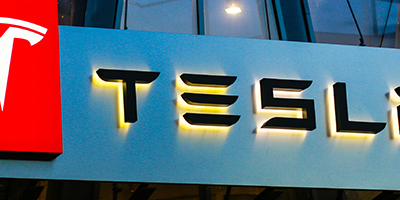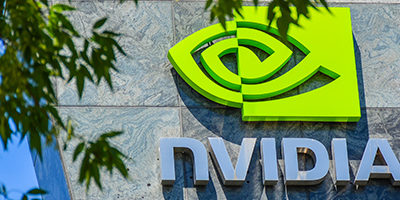%
Jubak’s Picks Performance 1997-2019
Jubak’s Picks
Buy and hold? Not really.
Short-term trading?
Not by a long shot.
So what is the stock-picking style of The Jubak’s Picks portfolio?
Click to expand...
Click to View the Jubak’s Picks Portfolio
I try to go with the market’s momentum when the trend is strong and the risk isn’t too high, and I go against the herd when the bulls have turned piggy and the bears have lost all perspective. What are the results of this moderately active — the holding period is 12 to 18 months — all-stock portfolio since inception in May 1997? A total return of 584% as of December 31, 2019. That compares to a total return on the S&P 500 stock index of 335% during the same period.
%
Top 50 Stocks Performance 2019
Top 50 Stocks
This long-term, buy-and-holdish portfolio was originally based on my 2008 book The Jubak Picks.
Trends that are strong enough, global enough, and long-lasting enough to surpass stock market averages.
Click to expand...
Click to view the Top 50 Stocks Portfolio
In The Jubak’s Picks Portfolio I identified ten trends that were strong enough, global enough, and long-lasting enough to give anyone who invested in them a good chance of beating the stock market averages.
To mark the publication of my new book on volatility, Juggling with Knives, and to bring the existing long-term picks portfolio into line with what I learned in writing that book and my best new ideas on how to invest for the long-term in a period of high volatility, I’m completely overhauling the existing Top 50 Picks portfolio.
You can buy Juggling with Knives at bit.ly/jugglingwithknives
%
Dividend Income Performance 2021
Dividend Income
Every income investor needs a healthy dose of dividend stocks.
Why bother?
Why not just concentrate on bonds or CDs?
Click to expand...
Click to view the Dividend Income Portfolio
Because all the different income-producing assets available to income investors have characteristics that make them suited to one market and not another. You need all of these types of assets if you’re going to generate maximum income with minimum risk as the market twists and turns.
For example: bonds are great when interest rates are falling. Buy early in that kind of market and you can just sit back and collect that initial high yield as well as the capital gains that are generated as the bonds appreciate in price with each drop in interest rates.
CDs, on the other hand, are a great way to lock in a yield with almost absolute safety when you’d like to avoid the risk of having to reinvest in an uncertain market or when interest rates are crashing.
Dividend stocks have one very special characteristic that sets them apart from bonds and CDs: companies raise dividends over time. Some companies raise them significantly from one quarter or year to the next. That makes a dividend-paying stock one of the best sources of income when interest rates start to rise.
Bonds will get killed in that environment because bond prices will fall so that yields on existing bonds keep pace with rising interest rates.
But because interest rates usually go up during periods when the economy is cooking, there’s a very good chance that the company you own will be seeing rising profits. And that it will raise its dividend payout to share some of that with shareholders.
With a dividend stock you’ve got a chance that the yield you’re collecting will keep up with rising market interest rates.
But wouldn’t ya know it?
Just when dividend investing is getting to be more important—becoming in my opinion the key stock market strategy for the current market environment—it’s also getting to be more difficult to execute with shifting tax rates and special dividends distorting the reported yield on many stocks.
I think there’s really only one real choice—investors have to pull up their socks and work even harder at their dividend investing strategy. That’s why I revamped the format of the Dividend Income portfolio that I’ve been running since October 2009. The changes aren’t to the basic strategy. That’s worked well, I think, and I’ll give you some numbers later on so you can judge for yourself. No, the changes are designed to do two things: First, to let you and me track the performance of the portfolio more comprehensively and more easily compare it to the performance turned in by other strategies, and second, to generate a bigger and more frequent roster of dividend picks so that readers, especially readers who suddenly have a need to put more money to work in a dividend strategy, have more dividend choices to work with.
Why is dividend investing so important in this environment? I’ve laid out the reasons elsewhere but let me recapitulate here. Volatility will create repeated opportunities to capture yields of 5%–the “new normal” and “paranormal” target rate of return–or more as stock prices fall in the latest panic. By using that 5% dividend yield as a target for buys (and sells) dividend investors will avoid the worst of buying high (yields won’t justify the buy) and selling low (yields will argue that this is a time to buy.) And unlike bond payouts, which are fixed by coupon, stock dividends can rise with time, giving investors some protection against inflation.
The challenge in dividend investing during this period is using dividend yield as a guide to buying and selling without becoming totally and exclusively focused on yield. What continues to matter most is total return. A 5% yield can get wiped out very easily by a relatively small drop in share price.
Going forward, I will continue to report on the cash thrown off by the portfolio—since I recognize that many investors are looking for ways to increase their current cash incomes. But I’m also going to report the total return on the portfolio—so you can compare this performance to other alternatives—and I’m going to assume that an investor will reinvest the cash from these dividend stocks back into other dividend stocks. That will give the portfolio—and investors who follow it—the advantage of compounding over time, one of the biggest strengths in any dividend income strategy.
What are some of the numbers on this portfolio? $29,477 in dividends received from October 2009 through December 31, 2013. On the original $100,000 investment in October 2009 that comes to a 29.5% payout on that initial investment over a period of 39 months. That’s a compound annual growth rate of 8.27%.
And since we care about total return, how about capital gains or losses from the portfolio? The total equity price value of the portfolio came to $119,958 on December 31, 2012. That’s a gain of $19,958 over 39 months on that initial $100,000 investment or a compound annual growth rate of 5.76%.
The total return on the portfolio for that period comes to $49,435 or a compound annual growth rate of 13.2%.
How does that compare to the total return on the Standard & Poor’s 500 Stock Index for that 39-month period? In that period $100,000 invested in the S&P 500 would have grown to $141,468 with price appreciation and dividends included.) That’s a total compounded annual rate of return of 11.26%.
That’s an annual 2 percentage point advantage to my Dividend Income portfolio. That’s significant, I’d argue, in the context of a low risk strategy.
Portfolio Related Posts
Another week of tech stock weakness ahead
I expect technology sector weakness to continue with earnings worries still unanswered. What could put an end to selling in tech stocks? The NASDAQ 100 is down almost 4% in the last week. Certainly earnings news that showed earnings growth at the companies in this sector robust enough to justify paying a premium for these shares would be a big help Unfortunately, the coming week isn’t going to bring enough earnings good news among tech shares to make this case. Among big tech stocks only Tesla (TSLA) and Alphabet (GOOG) are scheduled to report.
Yesterday I made Broadcom Pick #3 in my Special Report on the 5 Next Big Things
I’d buy Broadcom even at this price as one of my three core AI stocks from the current generation of leaders. I’m adding it today to my long-term 50 Stocks Portfolio.
Visa beats on earnings as worldwide payments volume climbs by 8%
Tuesday, April 23, after the market close Visa (V) reported adjusted net income of $2.51 a share. That ws 7 cent a share more than the consensus of estimates from Wall Street analysts. Earnings rose 7% year-over-year in the quarter. Revenue climbed 10% from a year prior to $8.8 billion, also exceeding Wall Street estimates
Tesla shocks Wall Street with size of quarterly sales drop
Yesterday, April 2, Tesla (TSLA) reported that it delivered just 386,810 vehicles in the first three months of the year. That was the biggest difference between actual sales and Wall Street sales estimates in data going back seven years, according to Bloomberg. Most analysts expected Tesla to sell more vehicles than a year ago. Instead, deliveries ended up dropping 8.5% year-over-year. And it was the first drop in year-over-year sales since the first year of the Covid-19 pandemic
Hold onto Nvidia for Blackwell chip launch–it’s a big deal even for the AI rocket
I can’t give you a definitive call on the top for this stock and this rally, but I am sure of one thing, I don’t want to sell Nvidia before the company’s new Blackwell chip architecture has hit full launch speed in late 2024 and 2025. My read is that this is the “perfect” AI chip for this moment in the AI boom.
Nvidia beats even the most optimistic earnings forecasts
Yesterday, May 22, after the market close, Nvidia (NVDA) crushed Wall Street projections for revenue and earnings for the company’s fiscal first quarter of 2025. Nvidia reported that revenue soared 262% year-over-year to a record $26 billion, marking an 18% quarter-over-quarter increase. Adjusted earnings per share climbed 461% to $6.12. The Wall Street consensus had called for revenue of $24.65 billion and earnings per share of $5.59. And it even beat the Wall Street “whisper number,” which in a bullish momentum situation like this runs considerably above the official consensus. Data center revenue hit a record $22.6 billion, up 427% year over year. Data center revenue represents 87% of Nvidia’s total sales. For the current fiscal second quarter of 2025 Nvidia told investors to expect sales of $28 billion, up 107% year over year.
Apple’s smartphone market share slide continues
Apple has lost its spot as the world’s biggest mobile phone seller, IDC reported today, April 15. A steep drop in sales in China for Apple let South Korean rival Samsung retake the lead in global market share. Samsung had been the biggest seller of mobile phones for 12 years until the end of 2023, when sales of Apple’s iPhone models overtook it. Global smartphone shipments increased by 8% to 289.4m units during January-March, according to IDC. Samsung has a 20.8% market share. That beat Apple’s 17.3% share
Apple shareholders looking at an even more volatile six months–buy, sell, or hold (and when)
Apple is likely to take its shareholders on an even wilder ride in the next six months than they’ve been on since the December all-time high at $199.62. The end result, I think is likely to be a renewed rally beginning in the fall–if you can either hold on through the volatility until then or see your way clear to timing when to buy and sell.








